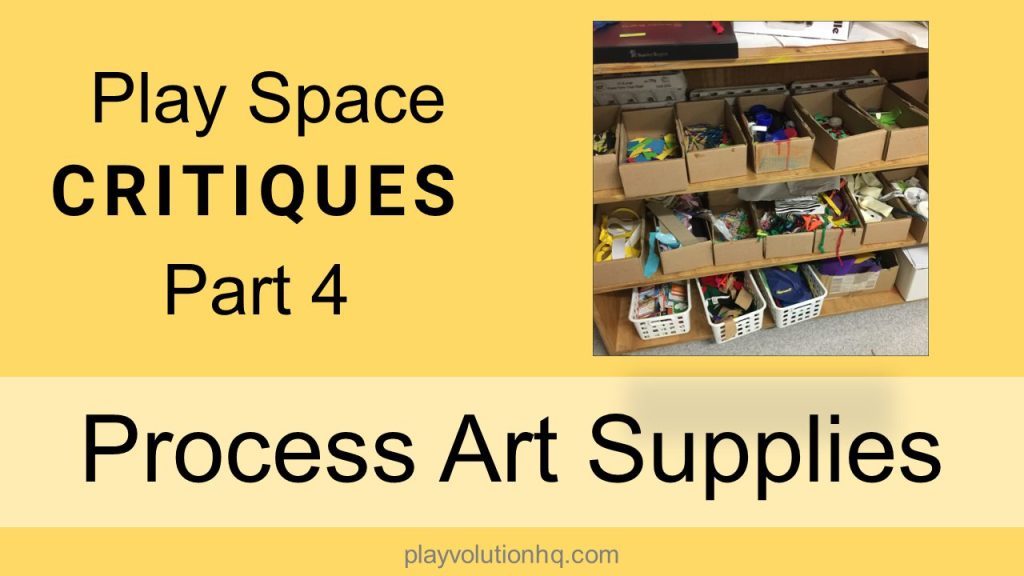
This post examines photos from a few early learning settings that do an effective job organizing and displaying process art supplies. All the settings pictured in this series look to be places where kids get hands-on with materials and Do Stuff. These don’t look like spaces where kids spend a lot of time sitting around waiting to be told what to do. In these settings, when young Montague want’s to create, he can create. He doesn’t have to bide his time until it’s craptivity creation time for the whole class.
Let’s look at some photos…
Lots of kids-accessible paint supplies. You can tell the adults who set up this environment trust the children who use it. First off, look at all the glass containers–the children are trusted to handle breakable stuff. It’s a chance to practice being careful. Kids are also trusted to pour their own paint from the big containers into the smaller containers housed on the upper-right shelf.
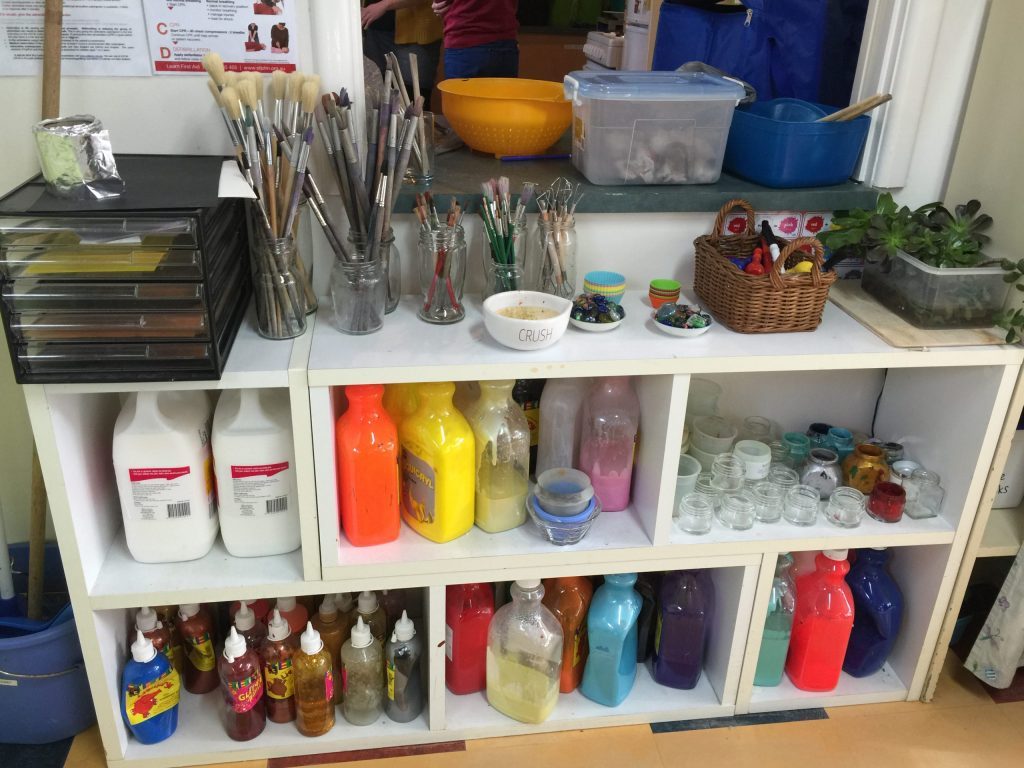
Is paint spilled? Do breakable containers break from time-to-time? It’s likely. But those are occasions for learning important life lessons–like Everyone Makes Mistakes And The World Keeps Spinning. The organizers of this space also seem to trust kids to deal with those mistakes–see the bucket with cleaning tools on the left?
Loose parts for Creating Stuff simply–and effectively–displayed. There’s a level of disorderly organization here that gives this space a delightful patina of play. You know these process art supplies get used.
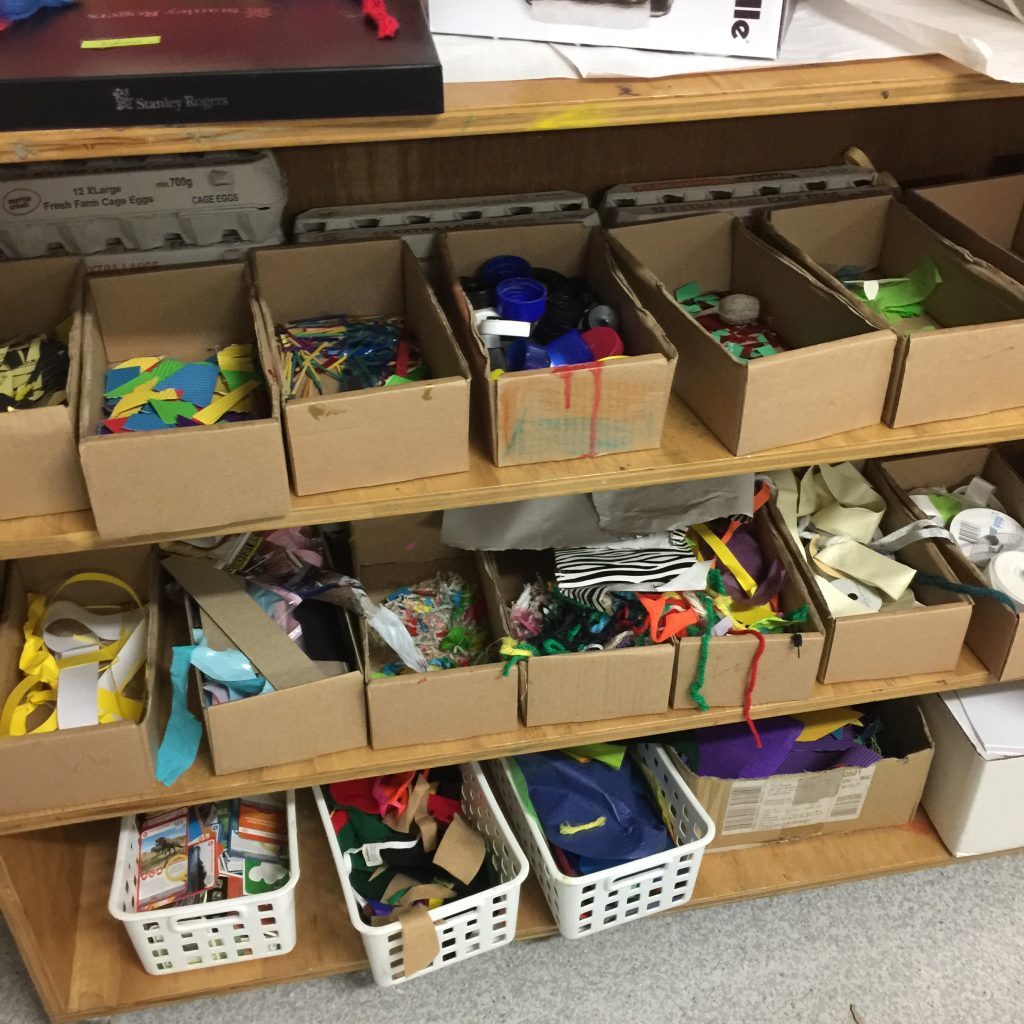
The cardboard boxes are not as pretty as options you might see in an early learning catalog, but they do the job. They may even be better for displaying process art supplies than the fancier catalog options because no one is likely to fret if they’re stained with a bit of paint or smeared with excess glue. The extra egg cartons stashed behind the boxes make good use of the deep shelves.
More trust. Tape dispensers and scissors ready for action. No asking. Not waiting. When there’s cutting to be done, you can cut.
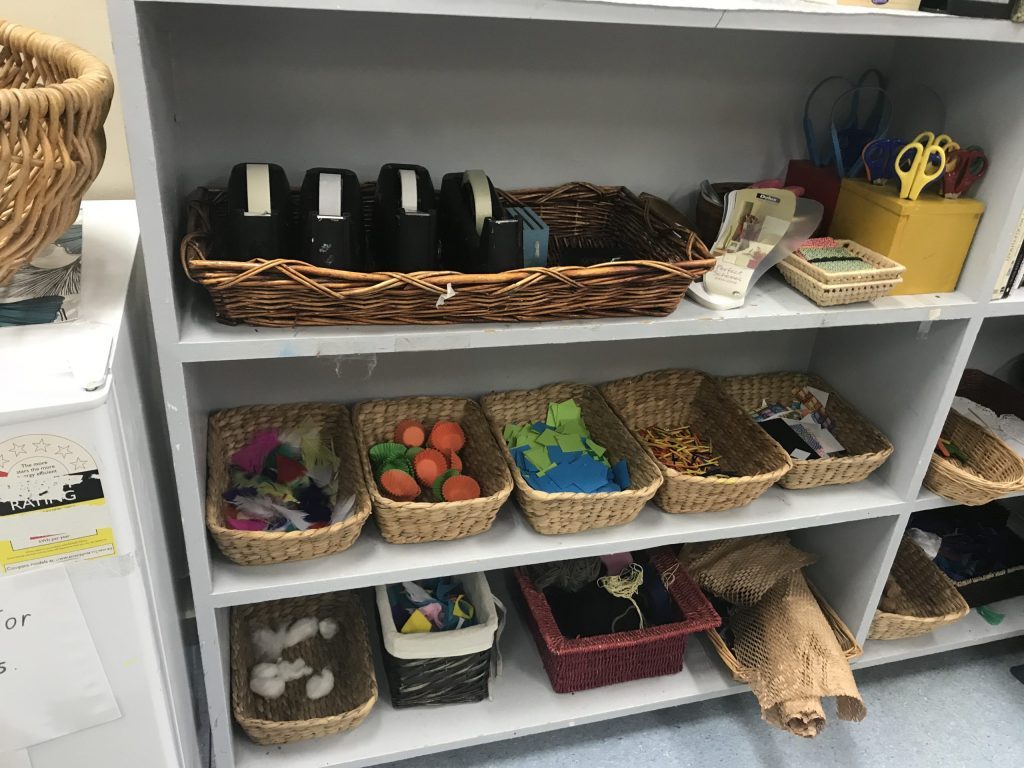
Aesthetically, I prefer the cardboard boxes in the previous photo, but these woven baskets are great options for displaying process art supplies too. I prefer their look–and texture–to plastic bowls and totes.
Accessible writing and drawing supplies. A great many options to pick from, but not so many that kids are likely to be overwhelmed.
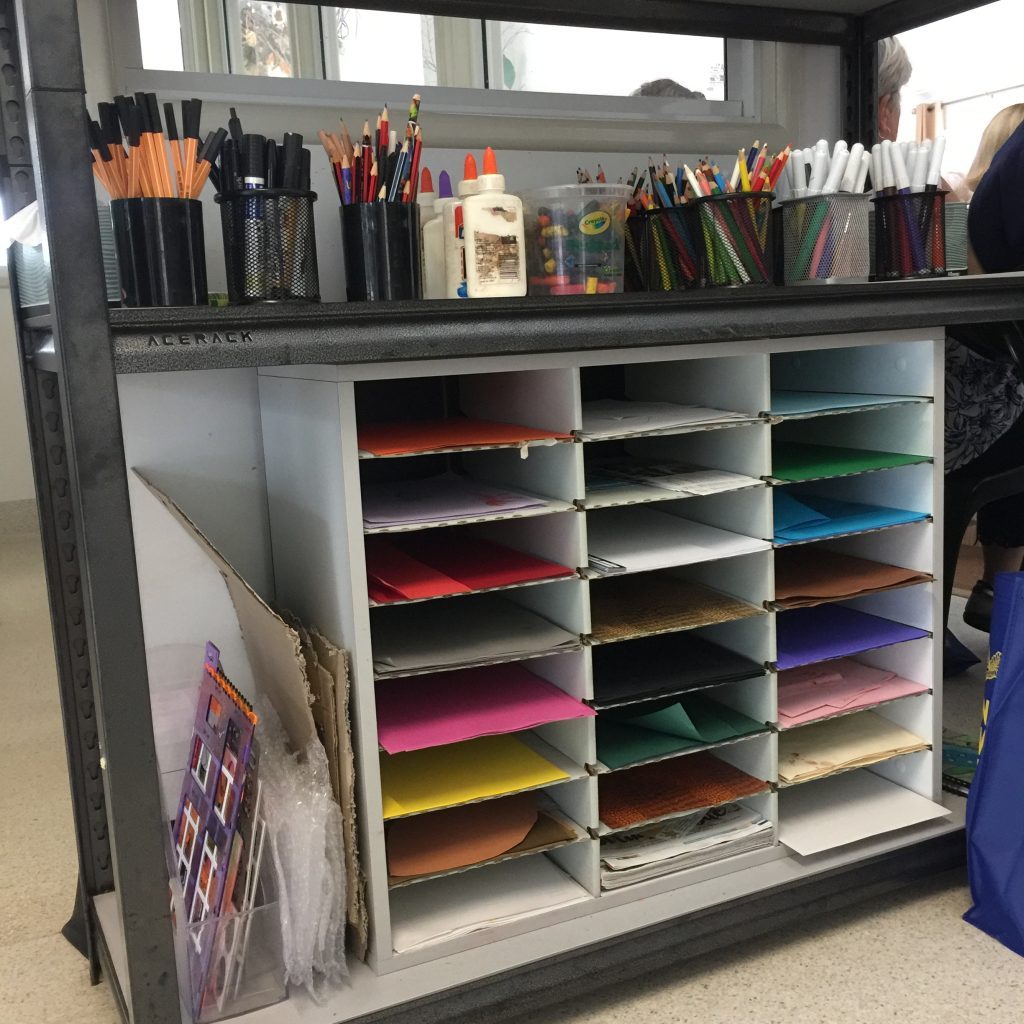
I mean, when Thelma’s arrives in the morning ready to draw, she knows what color paper she’ll be using before she gets her jacket off. The vertical space on the left is well-used for hunks of cardboard and sheets of bubble wrap.
How long would it take to glue all that stuff to sheets of paper? What a bountiful supply of materials organized in a minimum amount of space. Glass jars. Scissors.
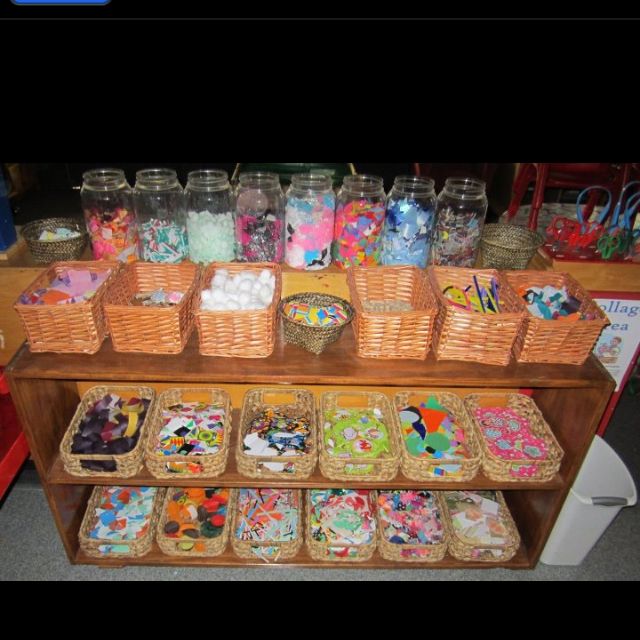
And a trash can handy for items that are not worthy of making the journey home to hang on the refrigerator.
There’s so much here. Scissors, markers, tape, cardboard tubes, rules, staplers, punches, clipboards, pencils, music, an electric pencil sharpener. glue, and more process art supplies. And upper cabinets with even more gear.
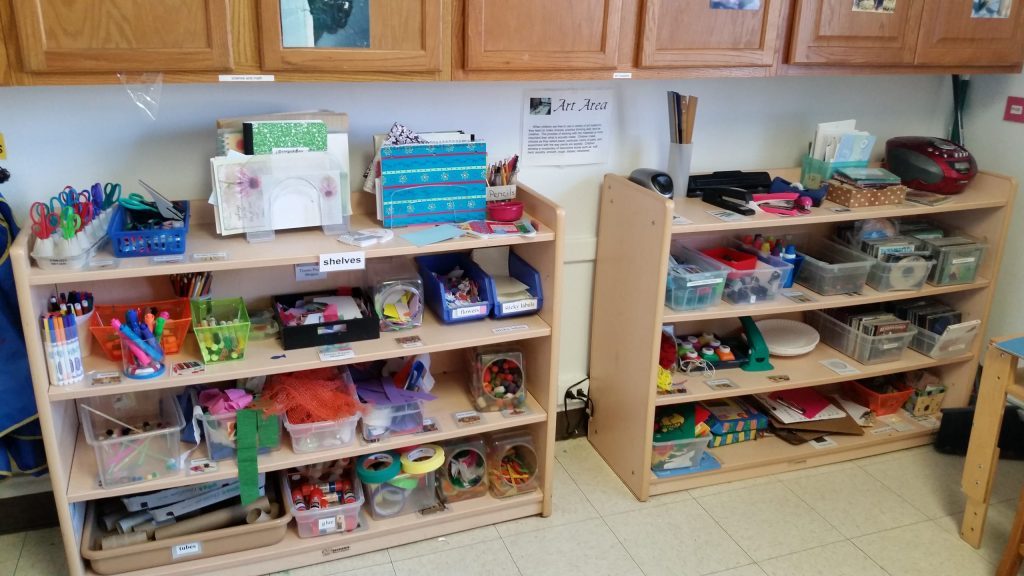
First time I’ve seen the DIY egg carton scissor holder–that’s a great idea. Wish I’d thought of it. I’m not a fan of the plastic totes, but they are inexpensive and readily available options. The translucent ones are my favorite since they make it easier for everyone to see what’s what.
Speaking of plastic containers, these cookie-jar like ones are great. They’re stackable, hold a lot, and are spill resistant.
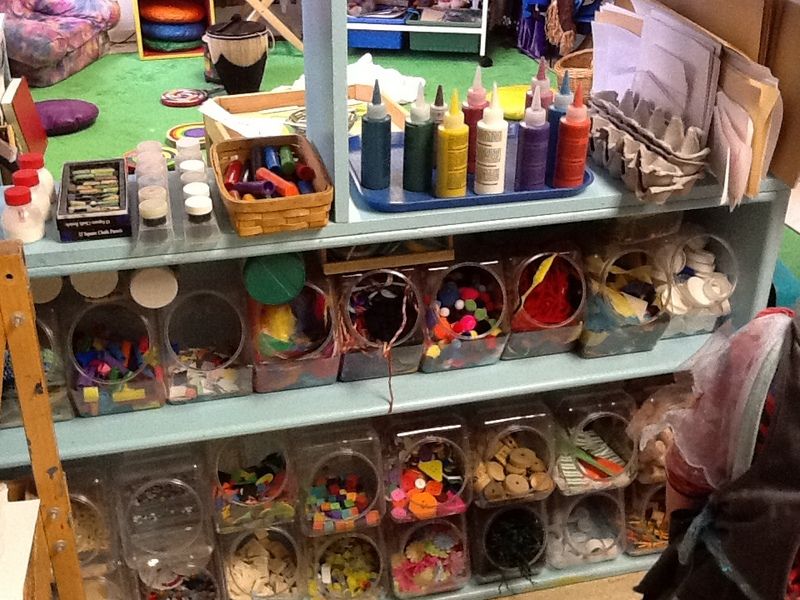
Again, there are a lot of process art supplies in this small space–colored feathers, wooden wheels, paper scraps, bottle lids, yarn, and lots more. It’s another space the trusts kids to create and Do Stuff.
Process Art Supplies Conclusions
All of these images show what I call Out For Use Storage in my 4 Useful Levels Of Play Gear Storage article. Among other things, tending to the organization of your process art supplies supports creativity and makes the space predictable. You’ll find thoughts on those and 5 more reasons in this article: 7 Reasons Play Gear Organization Is Important.
Have thoughts on the photos–or thoughts on our thoughts? Share them in the comments. You’ll find more play space critiques here.
Brought to you by Explorations Early Learning
Contribute content to Playvolution HQ
Post Author
Jeff Johnson is an early learning trainer, podcaster, and author who founded Explorations Early Learning, Playvolution HQ, and Play Haven.

Leave a Reply